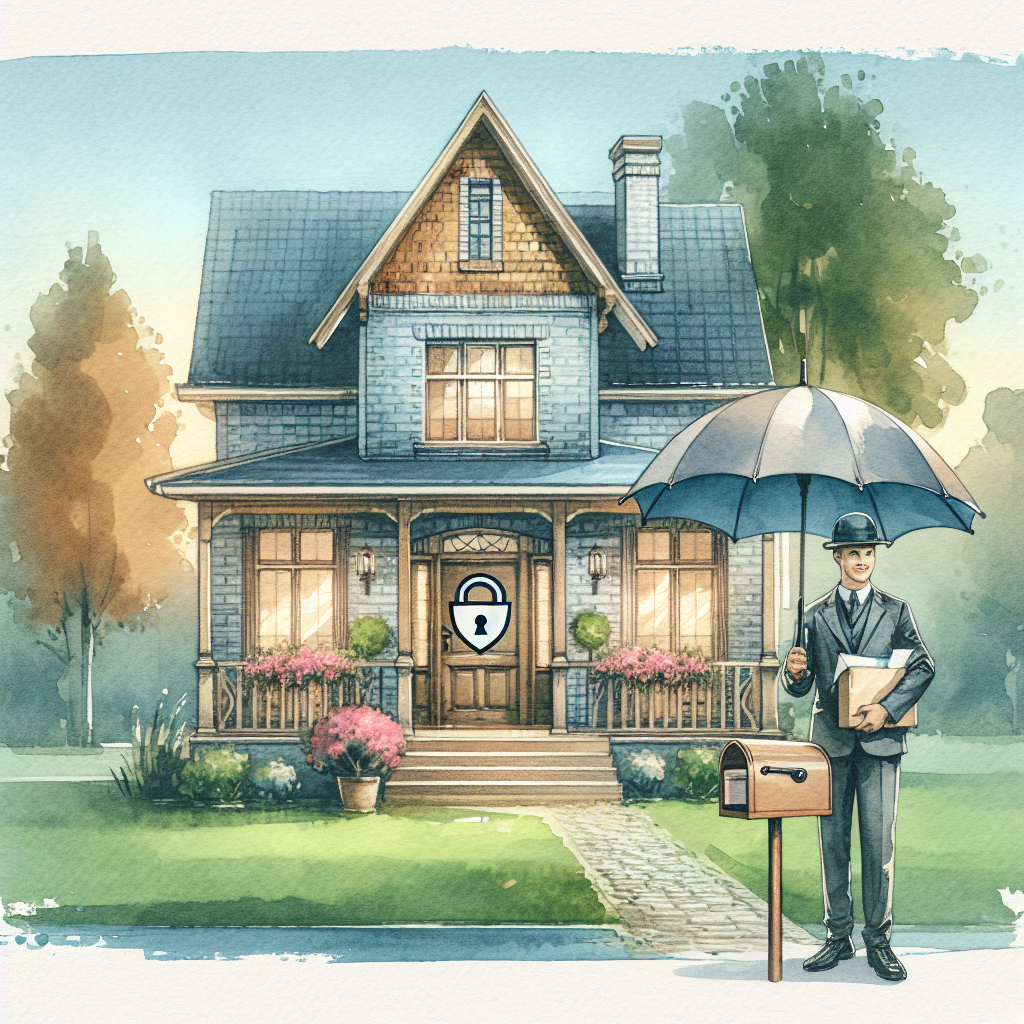Filed under Home Insurance on
Stillwater Home Insurance Coverage Explained

Shopping for homeowners insurance can feel like learning a new language while juggling a budget. You want protection that actually works when life goes sideways, without paying for bells and whistles you don’t need. This guide, Stillwater Home Insurance Coverage Explained, breaks down how a typical Stillwater homeowners policy works, what it covers, where gaps can appear, and smart ways to tailor your plan to your home and risk profile. Whether you’re buying your first house or re-evaluating coverage during a renewal spike, you’ll walk away with clear, practical takeaways.
Who Stillwater Is And Why That Matters
Stillwater Insurance Group is a national property and casualty insurer offering homeowners, condo, renters, landlord, auto, and umbrella coverage across many states. While availability, forms, and endorsements vary by location, the company focuses on flexible coverage options at competitive prices, with an emphasis on digital tools that make quoting and servicing easier. In recent industry ratings, Stillwater has been recognized for financial strength and claims-paying ability; check the latest A.M. Best rating at renewal time to ensure you have up-to-date information.
What does that mean for you? A financially stable carrier with broad distribution can typically offer a range of deductible and coverage options, optional endorsements for tailored protection, and multi-policy discounts that help offset rising premiums. In this Stillwater Home Insurance Coverage Explained guide, you’ll learn how to align those choices with your home’s realities.
Stillwater Home Insurance Coverage Explained: What’s Included
A standard homeowners policy with Stillwater typically follows the industry’s HO-3 structure, designed for owner-occupied single-family homes. Here are the core parts and how they work together:
- Dwelling coverage: Pays to repair or rebuild the physical structure of your home if it’s damaged by a covered peril. Your limit should reflect the reconstruction cost, not the home’s market value. Upgrades like custom cabinetry or high-end flooring should be factored into this amount.
- Other structures: Covers detached structures such as fences, sheds, and detached garages. This is often set at a percentage of dwelling coverage, with the option to increase if you have large or valuable outbuildings.
- Personal property: Protects your belongings—furniture, clothing, electronics—against named perils like fire or theft, whether they’re at home or temporarily off-premises. Replacement cost coverage is generally recommended, so you’re reimbursed for new items at today’s prices rather than depreciated values.
- Loss of use (additional living expenses): Pays for temporary housing, meals, and other increased costs if a covered claim makes your home uninhabitable during repairs.
- Personal liability: Covers legal defense and damages if you’re responsible for bodily injury or property damage to others. Typical starting limits are $300,000, but many homeowners opt for $500,000 or higher for peace of mind.
- Medical payments to others: Provides limited no-fault medical coverage for minor injuries that occur on your property, helping you address incidents before they escalate.
Most HO-3 policies insure the dwelling on an open-perils basis (everything is covered unless excluded) and personal property on a named-perils basis. Exact wording and options can vary by state and underwriting rules, so ask your agent to walk through your specific form language.
Key Optional Endorsements Worth Considering
Even robust policies have blind spots. Stillwater, like many carriers, offers optional endorsements to round out your protection. Availability and names vary by state, but the following are commonly offered and worth evaluating:
- Extended dwelling replacement cost: Adds an extra cushion, typically 25%–50% beyond your dwelling limit, if a widespread event drives up labor and material costs. This can be crucial after catastrophes when pricing spikes.
- Water backup and sump overflow: Covers damage from a backed-up drain or failed sump pump—events that standard policies often exclude. If your home has a finished basement, this is a high-value add-on.
- Equipment breakdown: Helps repair or replace household systems and appliances if they fail from a mechanical or electrical breakdown rather than an external peril. Think HVAC, water heaters, or built-in appliances.
- Ordinance or law: Pays for bringing parts of your home up to current code during covered repairs. Older homes benefit most from this endorsement.
- Service line coverage: Covers underground pipes and wiring on your property, such as water, sewer, or power lines, which typically aren’t covered under standard homeowners policies.
- Scheduled personal property: Raises limits and adds broader protection for high-value items like jewelry, watches, fine art, or collectibles. Appraisals may be needed.
- Identity theft recovery and cyber protection: Provides assistance and some reimbursement for expenses tied to identity fraud or certain cyber incidents.
Ask which endorsements are available in your state and how they coordinate with any community or utility programs you already have.
What’s Covered Versus Excluded
Insurance is as much about exclusions as it is about what’s included. Typical covered perils include fire, smoke, wind, hail, lightning, theft, vandalism, and damage from the weight of ice and snow. But there are common exclusions that surprise homeowners:
- Flood: Not covered by standard homeowners insurance. Consider an NFIP or private flood policy if you’re in a flood-prone or heavy rain area.
- Earthquake and earth movement: Usually excluded unless you add a separate endorsement or standalone policy.
- Wear and tear, neglect, or maintenance issues: Insurance isn’t a maintenance plan; rot, gradual leaks, and poor workmanship are typically excluded.
- Mold: Often limited or excluded. Add endorsements and practice quick mitigation to reduce exposure.
- Business activities: If you run a home business or rent your home short-term, you may need specialized endorsements or a separate policy.
In coastal or tornado-prone states, you may see separate wind or hurricane deductibles, often as a percentage of your dwelling coverage (e.g., 2%). Roof coverage can also differ by shingle age and condition; older roofs may be insured on an actual cash value basis unless upgraded. It’s vital to understand these nuances before a storm arrives.
How Much Coverage Do You Need?
Right-sizing coverage starts with a realistic reconstruction cost. Material and labor inflation since 2020, plus supply-chain disruptions, have pushed rebuild costs significantly higher than many homeowners expect. Here’s a quick approach to getting limits right:
- Dwelling: Use your insurer’s replacement cost estimator and share details about custom features. Ask about extended replacement cost and ordinance or law endorsements if your area has strict codes.
- Personal property: Conduct a home inventory using photos and room-by-room lists. Consider replacement cost coverage and schedule items that exceed special limits (jewelry, firearms, silverware, collectibles).
- Liability: Choose at least $300,000. Households with higher net worth or certain exposures (pools, trampolines, frequent entertaining) often select $500,000 and add an umbrella policy for $1 million or more.
- Deductible: Balance premiums with your risk tolerance. Higher deductibles reduce annual cost but require more out-of-pocket at claim time.
Pro tip: Revisit limits every renewal cycle. Remodeling projects, room additions, and new furnishings can quickly make old limits obsolete.
What Drives Your Premium
Premiums have been rising across the U.S. due to inflation in building materials, increased catastrophe frequency, and higher reinsurance costs. Here are key pricing factors that Stillwater and many insurers weigh:
- Location and exposure: Wind, hail, wildfire, and hurricane risks, plus distance to a fire hydrant or station.
- Reconstruction cost: Larger or upgraded homes cost more to insure.
- Roof age and material: Newer, impact-resistant roofs can reduce rates; older roofs may carry surcharges or coverage limitations.
- Loss history: Prior claims, especially water losses, can elevate premiums.
- Credit-based insurance score: Used in many states to predict loss propensity, subject to regulatory limits.
- Protective devices: Alarms, water leak sensors, automatic shutoff valves, and monitored security systems can unlock discounts.
- Bundling and loyalty: Pairing home and auto, or staying claim-free, can deliver multi-policy and loss-free credits.
Industry trend: Many carriers are rewarding mitigation investments. Roof upgrades, wildfire defensible space, and water shutoff devices are increasingly recognized with discounts or preferred pricing tiers.
Claims, Step By Step
When something happens, speed and documentation matter. Here’s the typical claims journey with a carrier like Stillwater:
- Ensure safety and prevent further damage: Shut off water, board up broken windows, or cover roof damage with a tarp. Keep receipts for all temporary repairs.
- Report the claim promptly: Provide date and cause of loss, areas affected, and photos or videos. Ask about your deductible and coverage specifics so you know what to expect.
- Inspection: An adjuster may visit or conduct a virtual assessment. Share your inventory and estimates from licensed contractors.
- Estimate and payment: You’ll usually receive an initial payment minus your deductible and, if applicable, recoverable depreciation. Once repairs are completed and receipts provided, you can claim the depreciation holdback.
- Additional living expenses: Keep detailed records of temporary housing and increased meal or travel costs for reimbursement.
Tip: Choose contractors with local references and proper licensing. If your policy offers a managed repair program, understand whether participation affects warranties, pricing, or timelines.
Real-World Scenarios And How Coverage Responds
- Kitchen fire: Smoke and fire damage to cabinets, walls, and appliances are typically covered. Loss of use kicks in if you can’t live at home during repairs.
- Burst pipe: Sudden and accidental discharge is usually covered, but long-term leaks are not. Water backup endorsement is needed for sump overflow or drain backups.
- Theft from your car: Personal property stolen from your vehicle is generally covered under your home policy’s personal property section, subject to deductible and limits.
- Tree falls on roof: Windstorm damage to your roof is typically covered; debris removal often has sublimits. If the tree didn’t damage covered property, removal may be limited.
- Dog bite: Liability coverage can respond, but some breeds or prior incidents may be restricted. Always disclose pets to avoid surprises.
- Hurricane or hailstorm: Covered, but watch for separate wind/hurricane deductibles and roof coverage terms.
The takeaway: Coverage hinges on cause, policy language, and endorsements. Review those details before you need them.
Common Gaps And How To Close Them
- Flood: If heavy rain or storm surge is plausible where you live, consider NFIP or private flood insurance. Even outside high-risk zones, 20–30% of flood claims come from moderate- to low-risk areas.
- Ordinance or law: Older homes are particularly exposed. Increasing this endorsement can save major out-of-pocket costs.
- High-value items: Schedule jewelry, art, or collectibles to bypass low sublimits and gain broader perils coverage.
- Rental activity: Occasional rental may need an endorsement; frequent or short-term rentals often require different policy forms.
- Mold and water damage: Add water backup, maintain plumbing, and install sensors to mitigate risk and improve claim outcomes.
- Service lines: Protects you from expensive surprises when underground utilities fail on your property.
Ways To Save Without Sacrificing Protection
- Bundle smartly: Pair home and auto or add umbrella coverage for meaningful discounts.
- Raise deductibles thoughtfully: Consider what you can comfortably self-insure. A higher wind/hail deductible may make sense in certain regions but weigh the frequency of storms.
- Upgrade your roof: Impact-resistant shingles or fortified roofing systems can reduce hail and wind losses.
- Install water mitigation tech: Automatic shutoff valves and leak sensors reduce the most frequent type of claim.
- Harden your home against wildfire: Clear defensible space, install ember-resistant vents, and maintain a Class A roof; some insurers recognize these steps.
- Review annually: As prices and home features change, adjust limits and endorsements instead of defaulting to price alone.
How Stillwater Compares
Every insurer has strengths. Based on public information and consumer feedback, Stillwater tends to emphasize competitive pricing, streamlined online quoting, and flexible coverage packages. In many states, you can tailor endorsements like water backup or equipment breakdown and adjust deductibles to hit a target premium. As with any carrier, service levels can vary by region and by the complexity of your claim, so agent guidance and proactive documentation remain essential.
For households with unique risks—coastal wind exposure, high-value jewelry, or frequent travel—it’s wise to layer solutions: the right Stillwater home policy, a flood policy where needed, and an umbrella policy to extend liability limits.
What To Ask Before You Buy
- How is my dwelling limit calculated, and does it reflect current rebuild costs?
- Do I have replacement cost coverage on both the dwelling and personal property?
- What are the wind/hurricane deductibles and any roof coverage restrictions?
- Which endorsements are available and recommended for my home’s age, systems, and location?
- Are there pet, trampoline, or pool restrictions that affect liability coverage?
- What discounts apply for security systems, water leak sensors, or roof upgrades?
A Quick Coverage Tune-Up Checklist
- Update your home inventory with photos and serial numbers.
- Verify scheduled items are appraised and properly listed.
- Confirm extended replacement cost and ordinance or law limits.
- Confirm water backup, service line, and equipment breakdown endorsements.
- Review liability limits and consider an umbrella policy.
- Check for discounts tied to mitigation updates you’ve made this year.
Frequently Asked Questions
What is the most important takeaway from Stillwater Home Insurance Coverage Explained?
The key is matching your coverage to your actual risks. Ensure your dwelling limit reflects today’s rebuild costs, add endorsements for likely exposures (water backup, ordinance or law), and set liability limits high enough to protect your assets.
Does Stillwater cover water damage from a sump pump overflow?
Not under a standard policy. You’ll typically need the water backup and sump overflow endorsement. Limits can be selected to match your basement’s finish level and contents value.
How does roof age affect claims and pricing?
Older roofs tend to increase premiums and may be settled on actual cash value rather than replacement cost. Upgrading to impact-resistant materials can improve pricing and claim outcomes.
Is flood insurance part of a Stillwater homeowners policy?
No. Flood is generally excluded. Consider separate NFIP or private flood coverage if you’re exposed to heavy rainfall, storm surge, or drainage issues.
What liability limit do most homeowners choose?
$300,000 is common, but many opt for $500,000 or add an umbrella for $1 million or more, especially if they have a pool, host gatherings, or possess meaningful assets.
Can I reduce my premium without losing vital protection?
Yes. Bundling, installing water leak sensors, choosing a higher deductible you can afford, and updating your roof can all lower costs while maintaining strong protection. Periodic coverage reviews help too.
Where does Stillwater Home Insurance Coverage Explained fit in my buying process?
Use it as a roadmap before you quote or renew. Identify which endorsements you need, choose appropriate limits, and prepare questions for your agent to avoid last-minute guesswork.
Does Stillwater offer endorsements like equipment breakdown or service line coverage?
These are commonly available across the industry and may be offered by Stillwater, subject to state availability. Ask your agent about limits, deductibles, and coordination with manufacturer warranties.
Getting A Quote: What To Have Ready
To speed up quoting and improve accuracy, gather:
- Year built, square footage, roof age/material, and details on systems (HVAC, electrical, plumbing).
- Updates or renovations, especially roofs, kitchens, or major system upgrades.
- Security features, leak sensors, and other protective devices.
- Any high-value items you want to schedule.
- Prior claim history and approximate dates.
Be candid. Accurate information ensures better pricing and reduces the risk of disputes at claim time. If an exterior inspection is required, make sure the property is accessible and well-maintained—it can influence underwriting decisions and available options.
Expert Tips For A Smoother Renewal
- Start early: Review your policy 30–45 days before renewal. If you’re shopping, get multiple quotes to compare forms and endorsements—price isn’t the only factor.
- Document upgrades: Provide receipts and photos of roof, electrical, or plumbing updates to potentially qualify for discounts or better underwriting terms.
- Mind special limits: Jewelry and collectibles are often capped. Schedule them to ensure full protection.
- Consider the deductible strategy: Some homeowners set a higher wind/hail deductible while keeping a lower all-perils deductible to balance risk and cost.
- Ask about mitigation credits: Carriers increasingly reward wildfire hardening, fortified roofs, and water controls.
The Bottom Line
Home insurance should be a financial safety net that’s easy to understand and ready to perform. As this guide, Stillwater Home Insurance Coverage Explained, has shown, the right approach combines accurate dwelling limits, targeted endorsements, and a thoughtful deductible strategy—supported by documentation and simple mitigation steps that reduce claim likelihood.
Coverage forms evolve, costs change, and risk patterns shift, especially with severe weather trends. That’s why a yearly checkup is essential. Use this Stillwater Home Insurance Coverage Explained resource to verify limits, close gaps, and make informed trade-offs before your next renewal.
If you remember one thing from Stillwater Home Insurance Coverage Explained, let it be this: your policy is a living document. Keep it aligned with your home, your lifestyle, and your risk tolerance, and it will do what it’s designed to do—protect your biggest investment when you need it most.




